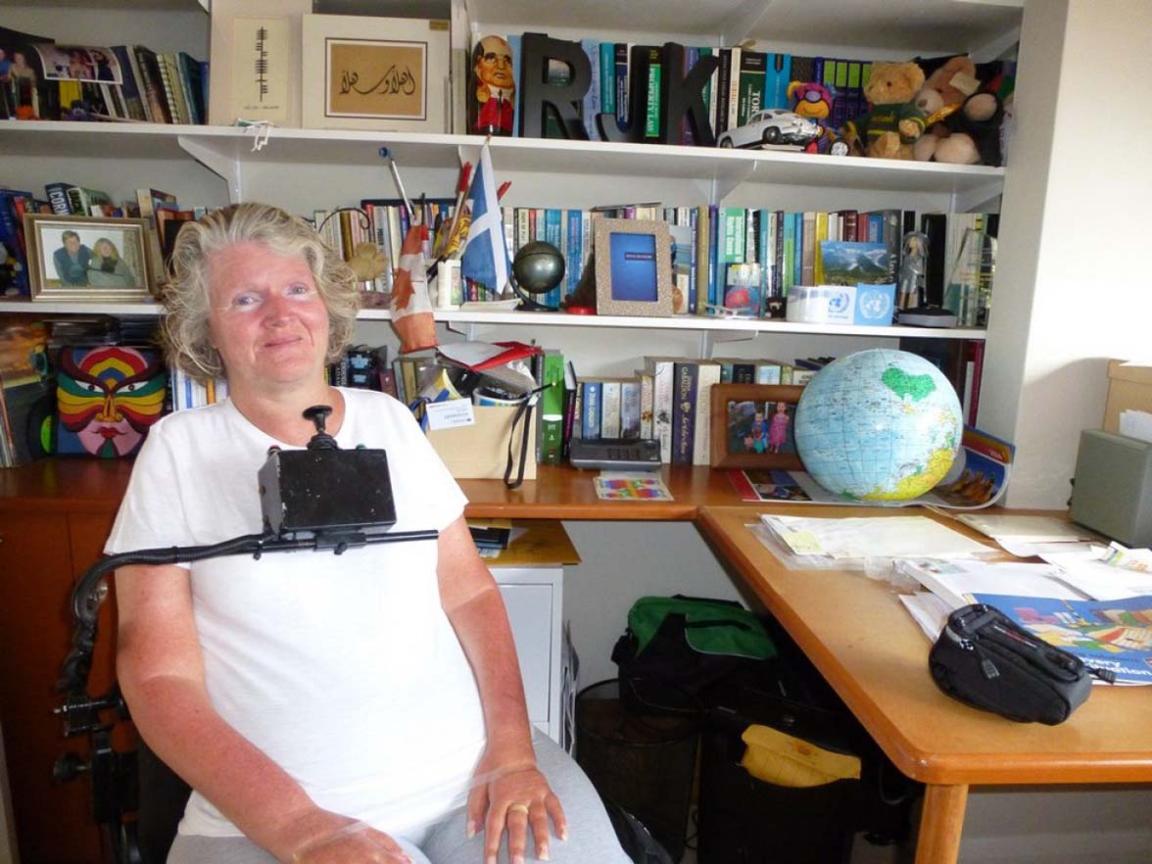Rosemary Kayess - Human rights lawyer
She has made a significant contribution to the disability rights movement having been appointed to the Australian Government delegation responsible for drafting the Convention on the Rights of Persons with Disabilities. After three decades at UNSW Sydney as a student, researcher, teacher, advocate and human rights lawyer, Rosemary Kayess left the university in early 2024 to assume the role of Disability Discrimination Commissioner with the Australian Human Rights Commission.

Rosemary Kayess, 2015, photo courtesy of Kim Rubenstein
Rosemary Kayess, 2015, photo courtesy of Kim Rubenstein
Rosemary Kayess - Convention on the rights of persons with disabilities
Rosemary Kayess - Drafting the convention
Rosemary Kayess graduated from the University of New South Wales with a Bachelor of Laws and a Bachelor of Social Science (Honours). She also has an Associate Diploma of Management (Community Organisations) and a Graduate Diploma of Legal Practice from the College of Law.
When she was 20, Kayess was in a serious car accident in which she sustained a spinal injury. The event set her on the path to her subsequent career.
From 1989 to 1995, Kayess was Director of Spinal Cord Injuries Australia while also serving on the Ethics Committee at the Benevolent Society of New South Wales and as Director of the Physical Disability Council of New South Wales.
Rosemary Kayess - Advocating for people with disabilites
In 2004–2006, Kayess was appointed to the Australian Government delegation responsible for drafting the Convention on the Rights of Persons with Disabilities (the Convention). After the drafting process had been completed, Kayess tirelessly promoted the Convention at workshops and human rights forums, arguing for its ratification by the Australian Government. In 2008 the Rudd Government ratified the Convention, thereby providing a basis for social inclusion of people with disability in all aspects of society.
According to Kayess, the timing of her involvement with the Convention was significant in setting a new direction for her academic career:
'International human rights was my area of focus and the Convention negotiations came up and it really was this once-in-a-lifetime chance and I was incredibly lucky to be involved. My academic work has sort of revolved in the past ten years around the development of the Convention. I was appointed to the Australian Government delegation for the negotiation process and, you know it's sad to say, but it really is the peak of an international lawyer's career to be involved in those types of negotiation processes.'
Learning activities
Activity 1: Impact and involvement
Have students discuss the importance of ensuring people impacted by agreements and conventions (like the Convention on the Rights of Persons with Disabilities) are involved in the development and promotion of these projects.
- What are the potential consequences when representation is not present?
Activity 2: Define and distinguish
Have students consider if there is something they are passionate about and might become an advocate for.
- Have students consider what being an advocate means.
- What considerations does one have to have to be a good advocate? Consider the relationships between:
- speaking WITH
- speaking FOR
- speaking TO
- speaking AGAINST
Activity 3: Rights and recognition
Review resources:
- Australian Women Lawyers as Active Citizens
- Australian Women’s Register
- Australian Dictionary of Biography
Explore other Australian women who have worked to improve the rights and recognition of refugees, women and the rights and recognition of Australian Aboriginal and Torres Strait Islander communities.
Activity 4: Domestic and international
How did/do their professional lives operate in a domestic Australian context and how much of their professional life operates in an international context? See The International Stage: Australian women lawyers as active citizens.
Activity 5: Active citizenship
What does it mean to be an active citizen? See Australian Women Lawyers as Active Citizens.



